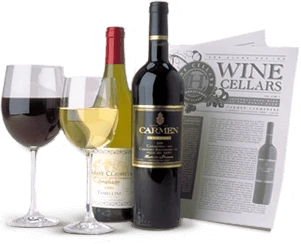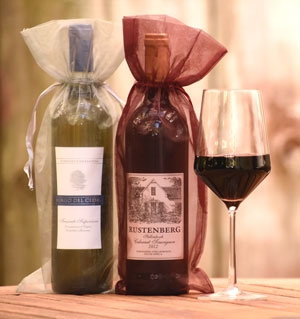Antoine Luginbuhl arrived in Castellina in Chianti with his family in 1980, after choosing Casina di Cornia as the ideal place to live and work. His imagination had been fired by the thick walls of the houses built on the outlines of 12th century buildings and the continuous alternation of warm hills, verdant crops, and an untilled parcel of land along a white road leading up to a southwestern facing hillside. Thus began Antoine's rapport with the land that has led him to follow his vines step-by-step, avoiding any intrusive farming practice from the winter pruning to the summer yield-limiting treatments, right through to the small boxes used in the harvest to keep the bunches intact. After a strict screening of the best grapes to be used in producing age-worthy wine, Luginbuhl allows his wines to evolve in oak barrels, losing their early roughness as they begin their journey to a perfect balance.
After nearly twenty years, Casina di Cornia remains a small estate situated in the Chianti Classico region in the heart of the Tuscan hills. The vineyards, exposed to the southwest, are planted with the grape varieties of Chianti: Sangiovese and Canaiolo for the red wine and Trebbiano and Malvasia for the white. They also grow some Muscat and Cabernet Sauvignon grapes. Since 1980, the estate has been cultivated according to the methods of organic agriculture. They use only manure and compost as fertilizers, natural fungicides, and plant extracts as antiparasitics.
In order for the wine to maintain its genuine quality and bouquet, Casina di Cornia uses recent scientific knowledge in oenology as well as organic techniques to keep interventions on grapes and wine to a minimum. The estate also follows a severe pruning policy, which reduces the average yield to 45 hl to the hectare, far below most Chianti estates.
During harvest, in order to avoid bruising, the grapes are collected by hand in small boxes. Vinification monitoring is conducted with accurate control of temperature to avoid oxidation. Minimal sulphur dioxide is used during bottling under the prescribed rules of organic agriculture. All of Casina di Cornia's wines are estate grown and bottled. It's nice to know that such wines and places still exist; visions of purity and simplicity in a shiftless world.
Chianti is a sea of vines amid the pastoral slopes of Tuscany. Between Florence and Siena over one hundred and fifty thousand acres of vines share the hills of this ancient land with olive groves and grain fields, bleating goats and sheep, and woods full of oak and chestnut. Chianti is the largest DOC district of Italy, producing more than two hundred million liters of wine from seven distinct districts. Chianti is, in fact, many different wines from over seven thousand registered growers in seven districts and their outlying areas. This is a land of contrast, a world in which tradition runs as deep as the roots of the vines on craggy slopes, and the adaptation of modern technology transform Italy's best known wine into one of the world's finest.
As far back as the 9th century B.C., the Etruscans were the first known inhabitants of Tuscany to cultivate the vine in Chianti. They were followed by the Romans who planted widely in the area, and the Church, whose stable influence in the early medieval period assured the continuation of vine cultivation and winemaking in Chianti. However, it wasn't until the 13th century that the much disputed wine-growing region between Florence and Siena became known as Chianti and the wines of that ancient hunting area began to be called by that name. At first, only the white wine of the district was called Chianti, but by the early 16th century the dry red wine of the area, also referred to as "Vermiglio," by Michelangelo and his Florentine contemporaries, had also adopted the name Chianti.
Today, Chianti is only a red wine. There is no legal provision for white Chianti, although a sizable portion of the district is devoted to the cultivation of white grapes, some of which find their way into the red wine. Chianti is not the product of a single grape variety. It is a blend of at least four, and sometimes five or more grapes, as prescribed by DOCG regulation. Two of the grapes, Trebbiano and Malvasia, are white.
In the 19th century, the powerful Baron Ricasoli, whose Brolio estate still produces wine, developed the working formula of grape proportions that is still roughly practiced in Chianti. Today, as prescribed by law, that formula consists of blending 75%-90% Sangiovese, the most renowned red grape of Tuscany, 5%-10% Canaiolo Nero and 2%-10% Trebbiano and Malvasia. In fact, Colorino, Cabernet Sauvignon, Merlot, and even grapes from outside of Tuscany can be used in small proportions, up to 10%, to firm up Chianti. Due to the number and varying proportions of grapes prescribed for Chianti, as well as the differences in soil and micro-climate from vineyard to vineyard, , the Chianti vintner has real latitude in developing his own style of wine.
Although the Chianti Classico Consorzio is not the only consortium in Chianti, it is the most recognizable as a voluntary standard of excellence. The Chianti Classico Consorzio seeks to define, improve and promote the wines of Chianti Classico, the traditional heart of Chianti that is entitled to DOCG designation. More than 90% of the producers of Chianti Classico belong to the consorzio. Standards are strict; monitoring of prescribed grape varieties and vineyards, yields, alcohol levels, and even a tasting of every producer's wine are part of the annual ritual of enforcement. Today, it is rare for the wines that bear the seal of the Chianti Classico Consortium, a black rooster, or "gallo nero," on the neck of its bottle to be less than fine. This is particularly true of the "Riserva"designations, which are required to be aged for a minimum of three years, (two years in barrel and at least one year in bottle), before being released.
In all its incarnations, Sangiovese makes a wine of rustic elegance, not wildly complex or deeply sophisticated, but straightforward and pleasantly lingering. It's not a wine for meat that's elaborately sauced or delicate, but goes well with roasted or grilled meats. Tuscans invented bruschetta, which they spread with chicken liver, and that's another perfect match, as is calf's liver and onions.

Enjoy Limited Production Estate
Bottled Wines
Discover limited production estate bottled wines such as Vergenoegd's internationally
acclaimed 2005 Cabernet Sauvignon, imported exclusively for our members.


